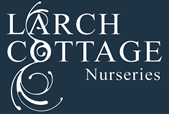Advice
Why plant a hedge?
Hedging has fabulous practical and aesthetic purposes in the garden and, as the risk of frost passes and the ground becomes more workable, it is a good time to get planting one.
Hedges can be used to mark boundaries and add definition to your garden; they can provide frame and focus, guiding the eye to design features and screening unwanted views, or they can become architectural highlights themselves, with imagination and clever clipping.
Rather than acting as a barrier, hedges filter the wind, creating a sheltered microclimate, warming the soil and providing added protection for plants. This is particularly useful if you live in a coastal area where soil erosion and foliage damage from salt and sand can be problematic.
Hedging is a great way to give back to the environment too, providing nesting sites and food and shelter for birds, butterflies and pollinators. Carefully selected mixed hedging can provide early blossom in spring and fruits and seeds later in the season and throughout the winter. It Is a rich and valuable habitat favoured by 30 species of woodland birds. At Larch Cottage Nurseries we are lucky enough to regularly glimpse bullfinches calling from our taller hedging and we know spring has definitely sprung when the yellowhammers begin calling from the lower branches. To encourage nesting bullfinches and turtle doves you will require hedging of 4m or more, while hedges of 2-3m will encourage species such as linnets, whitethroats and yellowhammers into your garden. Hedgerows also provide an excellent way to connect isolated patches of habitat, allowing mammals such as hedgehogs and dormice to move freely between feeding and nesting sites.
Here at Larch Cottage Nurseries, we offer a great range of hedging varieties to meet your design needs. Viburnum opulus makes a fantastic hedge with its white, lace-cap flowers and large red fruits, while species roses such as Rosa rugosa will produce beautiful large, single blooms in your garden hedge, followed by wonderful, ornamental hips. Crataegus monogyna (native hawthorn), Prunus spinosa (blackthorn) and Fagus sylvatica (common beech) are hardy, native varieties, ideal for creating a mixed hedge that will serve your visiting wildlife throughout the seasons. Corylus avellana (native hazel) provides beautiful long, yellow catkins in February and can grow in both shade and sun. Honeysuckle varieties offer beauty and fragrance throughout the seasons. Use Lonicera Fragrantissima in an informal hedge; with its fragrant, creamy-white bell flowers in late winter, it provides a valuable nectar source for early flying insects. Lonicera nitida varieties also make excellent hedging plants. Fully hardy and sweetly scented Lonicera nitida ‘Baggesens Gold’ is an evergreen variety with attractive golden yellow leaves that are tinted with bronze.
With so many varieties on offer here at Larch cottage, you can create the ideal hedge for the size and design of your outside space while also providing an important habitat for your wild visitors.
(Blog post written by Jo Chamberlain)

